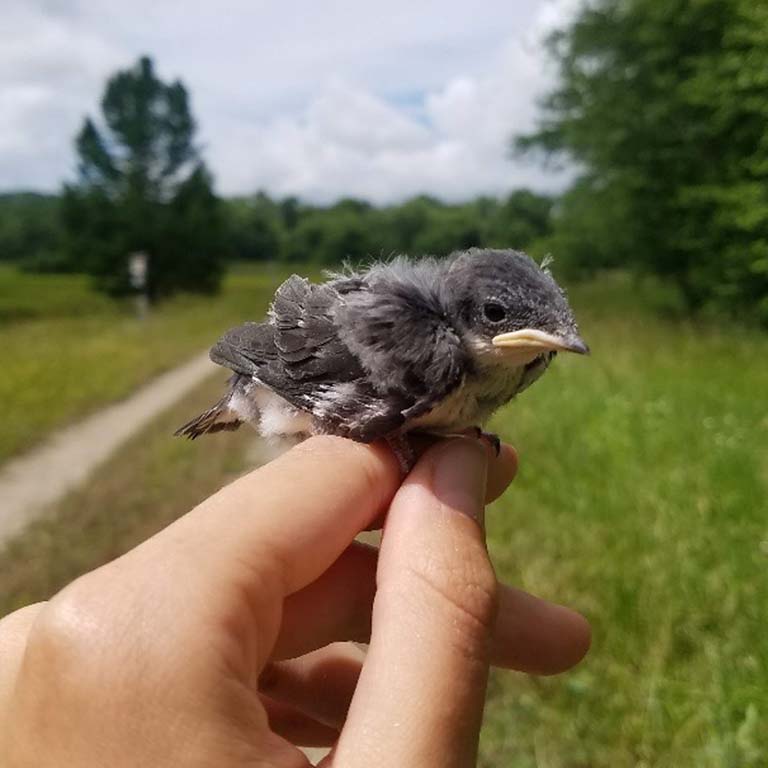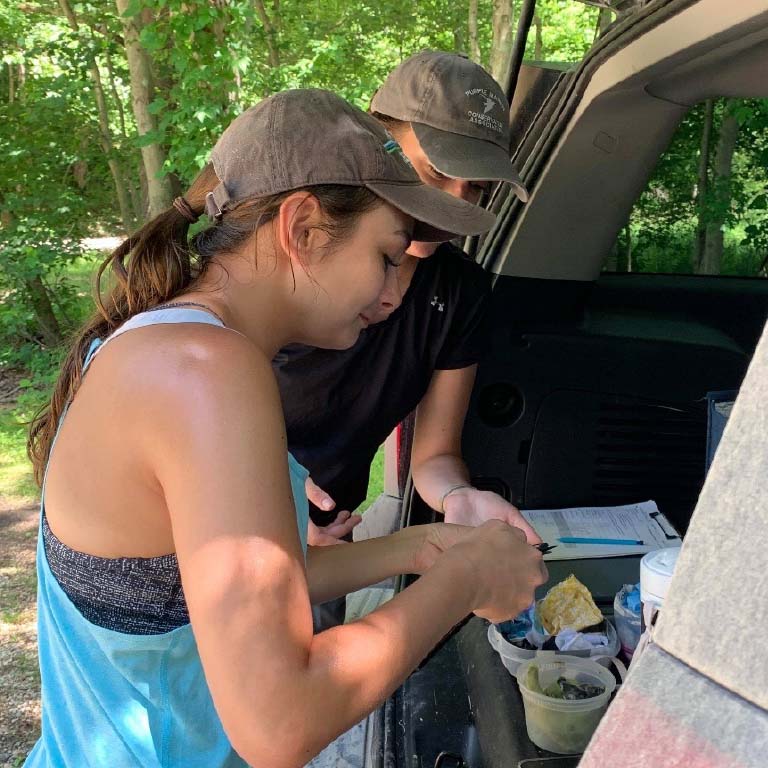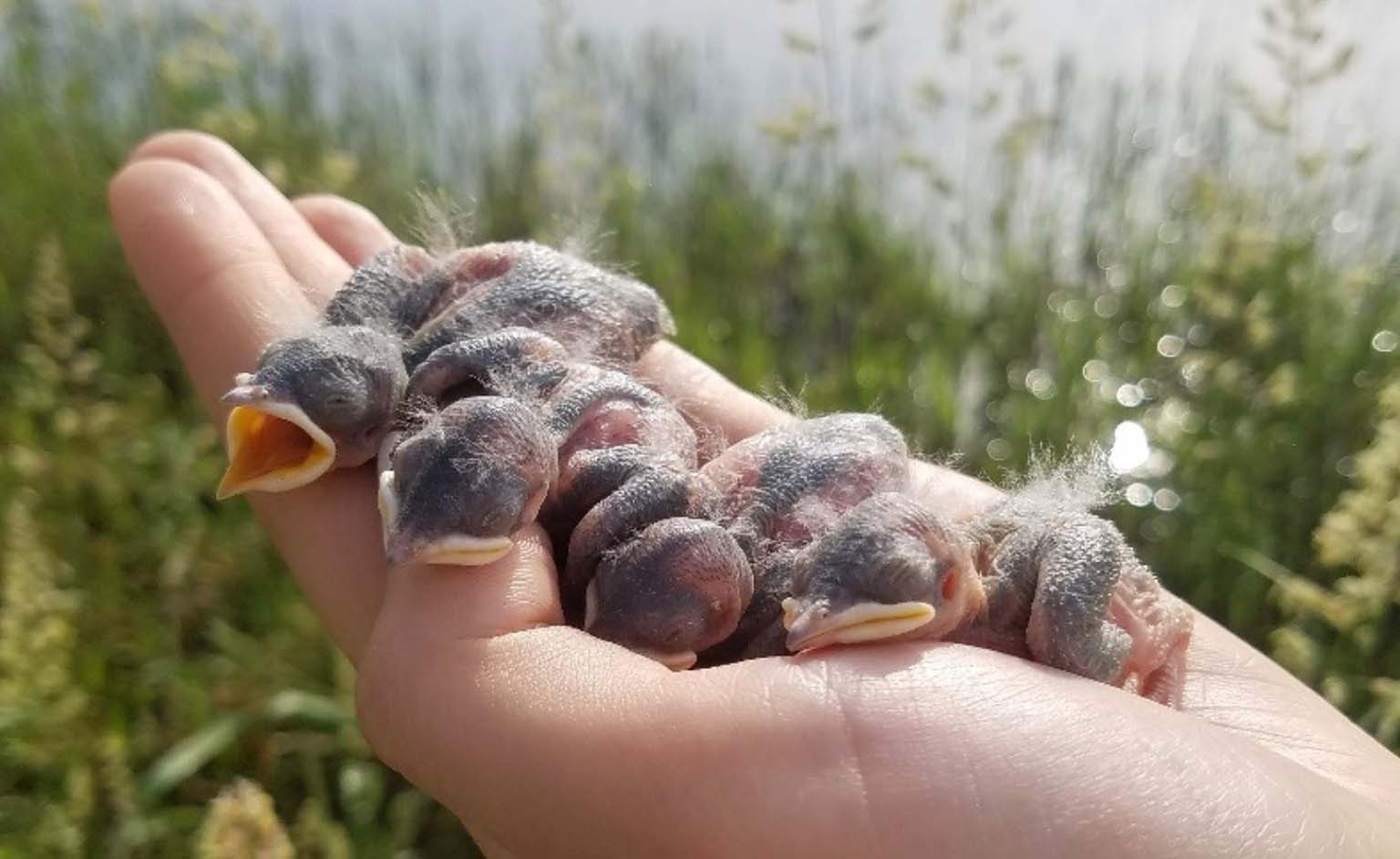Heat waves are becoming more intense and more frequent as the climate changes. Heat can affect an animal’s brain health and survival; however, we know far less about how behavior and physiology protect animals from heat. This is especially true for endotherms (warm-blooded animals) like birds, which are declining at alarming rates amidst rising temperatures. Indiana University Department of Biology scientists Mary J. Woodruff and Kimberly A. Rosvall are studying bird defenses against heat.
Heat waves and thermal tolerance
How do birds cope with heat waves?
Researchers: Mary J. Woodruff, Kimberly A. Rosvall
As temperatures continue to rise, animals need to cope with more frequent heat waves. A little bit of heat may be beneficial, but at some point, animals must adjust their behavior or physiology or risk harmful effects. For example, birds may change their behavior by moving to a shaded area or by panting to stay cool. Internally, birds can regulate stress hormones to mobilize resources needed to cope with heat, or they may regulate the gene expression of heat-protective mechanisms.
One such heat-response mechanism is heat shock proteins, which repair cells damaged by heat stress. Scientist Mary Woodruff from the lab of Associate Professor Kim Rosvall studies which defense strategies—behavioral, physiological, or both—birds use to respond to heat. This research focuses on birds at their most vulnerable stage, the first two weeks of life while they are still developing in the nest.
In recent years we have seen that some species are more equipped to cope with rising temperatures than others. While some species’ populations are declining (e.g., the polar bear), other species (e.g., white-tailed deer) are growing in numbers. While many birds are shifting their North American breeding range north as southern climates become too hot, the Tree Swallow (Tachycineta bicolor) breeding range is expanding south, as far south as South Carolina. We do not fully know why this is happening. Tree Swallows’ current success in warmer southern climates, however, suggests they may be able to effectively respond to heat and minimize the effects of heat stress. But how do nestling birds defend against heat stress when they are still confined to the environment of their nesting cavity or box?


Woodruff and Rosvall have found that mild heat induces behavioral thermoregulation. Specifically, nestlings panted more and huddled less with their siblings—changes that help to regulate internal body temperatures and prevent overheating; however, nestling ‘stress’ hormone secretion and heat shock protein gene expression was unaltered, suggesting that behavior changes buffered them from initiating a physiological response to heat.

Ongoing research suggests that more intense heat, similar to what is projected with climate change, does engage heat shock proteins, indicating that even species that fare well in warm environments may be pushed to their tipping point with climate change. The Rosvall Lab continues to explore nestling defenses against heat with the aim of improving predictions of bird health and survival in our changing environment.

